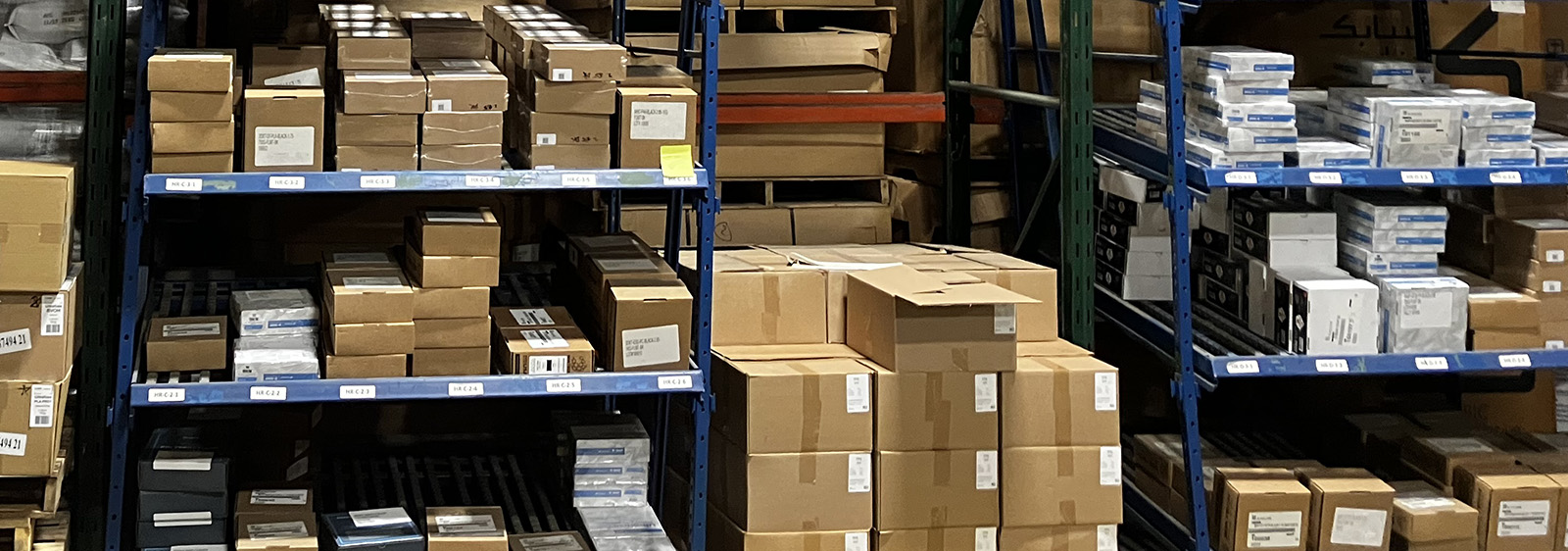
Company owners that provide products have a lot to think about when trying to establish and maintain a successful, profitable business. Unless your products are entirely dropshipped from manufacturer/wholesaler to customer, one area that is extremely important—but sometimes executed poorly—is inventory management. Any business owner that sells products that they have warehoused should make sure that the inventory management of their products is effective—regardless of whether they handle it or outsource management to a third party. Here are 6 tips for efficient inventory management.
1. Adopt a Methodology for Categorizing Inventory
The ABC Analysis in inventory management is derived from Italian economist Vilfredo Pareto’s 80/20 rule (roughly 20 percent of some entity/action taken is responsible for 80% of an outcome). While the 80/20 rule is not going to be true in all instances, you can consider it a general rule of thumb. The ABC Analysis is built upon the theory that 20% of inventoried goods are (not necessarily ought to be) responsible for 80% of the value of total inventoried goods. Inventory is categorized into three groups:
- A: High-value items that take up the least amount of inventory
- B: Medium-value items that take up the 2nd most amount of inventory
- C: Low-value items that take up the most amount of inventory
The FSN Analysis is more fluid than the ABC Analysis. Care must be taken to understand why certain product is moving, while other is stagnating. Are there seasonal fluctuations? Are there pricing issues? Is there a lack of awareness about certain products?
Categorizing products into groups such as ABC or FSN can be a helpful way for companies to make the best decisions for re-ordering product (balancing what generates the most profit with what requires more of an upfront financial commitment), creating marketing strategies to sell inventory that is slow to move, and eliminating products that cause a financial strain while delivering few to no rewards.
2. Invest in a Good System to Manage Inventory
A good inventory management system (IMS) will provide you with complete visibility of your inventoried products. An IMS alone is typically all that is needed for a small business that warehouses product. A good warehouse management system (WMS) will have the necessary components to track the receiving and movement of inventory in real time. Either system will be able to track product in a variety of ways (SKU’s, product type, expiration dates, lot, batch numbers, warehouse location, etc.). While purchase of software (particularly a WMS) may demand quite a bit of upfront cost if managing inventory yourself, the investment will be well-worth it, once the system is implemented and users are well-trained in how to operate it. The IMS/WMS should be part of, or able to fully integrate with, a larger accounting or Enterprise Resource Planning (ERP) software system. If outsourcing inventory management and warehousing, ensure that the quality of your 3PL partner’s WMS is sufficient to meet your needs.
3. Optimize Storage Layout and Inventory Placement
Where items are placed in your warehouse is very important. The layout of the warehouse or specific sections of it should be optimized to store the product being inventoried. Similar products or products likely to be assembled or kitted together should be stored nearby, which will minimize travel time for picking the products, thereby maximizing the efficiency of the process. Faster-moving items might best be placed closer to packing areas. Product type can determine whether items need to be stored in bins, on pallets, on specialized racks, etc.
The type of products you sell should typically determine how and where they are physically placed into inventory. The principle of FIFO (First In, First Out) should be applied for any perishable item, but seasonal trends can influence this (e.g. Halloween-themed candy being moved to the front of racks during the Halloween-selling season). Since perishable products that are ready to be stored first are typically the freshest, they should be placed where they can be picked first for packing. The IMS or WMS that is used can be set to arrange items by FIFO electronically. Other principles for inventory placement include the similar FEFO (First Expired, First Out) and LIFO (Last In, Last Out). The latter can apply for companies that rely on selling the latest and newest products.
Conduct Regular Cycle Counts
Conducting regular times to count portions of inventory is critically important. Regularly checking physical stock amounts and comparing it with the inventory amounts in your system helps to ensure that you have the most accurate, up-to-date inventory levels. Discrepancies can highlight an issue that needs investigation—are products being stolen, misstored, destroyed and unreported, entered incorrectly or not entered at all into your system? Although less likely, is there a problem with your software? The ABC Analysis can help you create a natural method for conducting cycle counts, but you can decide what works best. Too many red flags may require you to set aside time for a full inventory count sooner than you would like. Cycle counts can be done weekly or monthly with little disruption, while a full inventory count (typically seasonally or annually) usually demands much more time and is often scheduled during non- (or non-peak) business hours.
Monitor Stagnant Inventory & Product Returns
Product that is not moving is hurting a business in two ways—it is not returning anything on a business’ investment and it is taking up valuable warehouse space. When you keep track of non- or slow-moving inventory, you can create strategies to generate customer interest. You can create a special sale, bundle items together, or create a special marketing campaign to remind customers about its existence. Identifying non-moving items early can prevent you from re-ordering items that will not sell. It can also prompt you to investigate reasons for the lack of sales. Monitoring returns in a timely fashion can alert you to potential problems with products—is sizing incorrect? Is there a problem with taste or quality? Are my product descriptions misleading?—which can give you the time to potentially rectify an issue before it becomes a bigger problem.
Implement Demand Forecasting
Use the data you accumulate via ABC or FSN Analysis, inventory monitoring/cycle counts, sales, and market analysis to implement demand forecasting. This will allow you to predict which products are more likely to be purchased in what quantities, at which particular times of year, and at what prices based on historical trends or market volatility (such as fluctuating prices for commodities used to create your product). Demand forecasting can help you to determine the quantity of inventory you should purchase and how quickly it is likely to be sold to your customers. It will help you make informed decisions on the levels products in stock should reach before reordering is triggered (either manually or automatically via your IMS or WMS). It can also help you determine the quantity of safety stock you might want to have on-hand so that you have enough to cover future orders (in case of a supply chain disruption, for instance) without leaving you at a high risk of purchasing stock that does not sell and becomes obsolete.
In Closing
We’ve provided 6 tips for making your inventory management more efficient. When you take control of your inventory with efficient practices, you’re not just saving time and money—you’re building a stronger, more responsive business. By implementing these strategies, businesses can streamline inventory operations, reduce costs, and stay agile in a competitive market.
